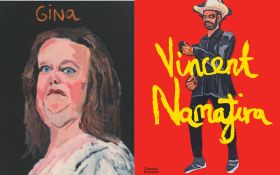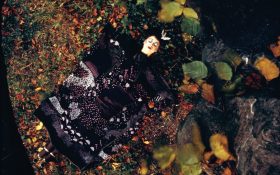Modern Art Gallery n. iconic, landmark building.
You might also add that it’s a place to view modern art.
All over the world people have been flocking to art galleries in their millions. The galleries can’t cope. They’ve had to extend or find new sites. And many of the new buildings have become instant signatures for their cities. The resurgence of interest in art is really quite staggering and may or may not have anything to do with the galleries’ ticket prices – or lack of them. The numbers tell the story, not least at Tate Modern where the design of only a few years ago was briefed to accommodate 1.8 million per year but the building now attracts almost 5 million people. This has put considerable strain on the building, from its first year onwards, when there was a notable congestion problem on the rather graceless staircases. Nicholas Serota, writing in The Art Newspaper, says that “there’s an urgent need to improve and extend all our facilities (at Tate Modern)” and that the new building, which will sit behind the existing one, will provide “a platform from which we will be able to serve artists and audiences in the 21st (century).” But hang on a minute, the gallery was created seven years ago from an investment of £137 million. Did somebody seriously misjudge the likely popularity of art? Wasn’t that a new gallery for a new millennium? Anyway, it has without doubt outgrown its box, and look, here comes the new one (foundations going in this year). And you know it’s an art gallery because it looks like a loosely arranged tower of odd-shaped glass boxes, sticking out at strange angles.
Herzog & de Meuron have adopted the Bilbao format for the Tate Modern extension. All strange profiles, daring cantilevers and unlikely angles, it sits in the current mainstream of art gallery design, at least externally. Although attached to an old, conservatively detailed, river-frontage power station, its form willfully breaks free and offers a massing which owes more to the 1960s QE Hall and Hayward Gallery than to its progenitor. So in this respect it will bring a sense of familiarity to those who have strolled along from the South Bank complex. Close up, the artist’s impressions lead one to the conclusion that, in its context, it might appear to be a monstrous carbunkle on the backside of Bankside. Does this matter? No, not really. In many ways it’s being a lot more honest than the original post-modern carbunkle, over in Trafalgar Square. Will it be good for business? Oh yes, you bet! This is going to jossle with The Eye and The Gherkin for background shots when presenters and reporters are wanting to give visual signals that they really are in London. So, it’s going to need a name. Suggestions please on a postcard, or blog.
We can only surmise what TM3 will look like in the context of 1 and 2, when, in another five years time it becomes evident that a further extension costing a billion pounds will be needed to accommodate the trillions of art enthusiasts desperate for their fix of avant-garde. It will certainly need to be a whole lot bigger, big enough to house everything from the heritage collection of decaying 1990s YBA stuff and dozens of entire student collections donated by Saatchi, through to the do it yourself halls where members of the public can ‘do’ instant art under the watchful gaze of business tycoons eager to proclaim (and sign up) a new X-Art-Factor winner. Crikey, it’s gong to be so big that they might have to outsource it to the provinces: TM3 Leeds (yes, Leeds needs reinventing), but don’t expect millstone grit walls and slate roofing.
I haven’t been to Bilbao, or seen Stirling’s gallery in Stuttgart, but images of their interiors show soaring spaces, at least as exciting as their exteriors promise. I do know the Guggenheim in New York, where form triumphs over function in a spectacular way, Wright having created a signature building without thinking too hard about the gallery space (a spiral ramp is not a comfortable viewing platform). But maybe the agenda is less about getting a gallery for displaying artwork than it is about having a gallery as a cover for getting noticed. A useful by-product, if you will.
Like any building, and perhaps more than most, an art gallery (modern or otherwise) has to be designed from the inside out, and it needs a readily understandble layout (or programme) that first time visitors can quickly engage with. They don’t want to get lost. Orientation is an important factor and ideally should not rely upon plans and diagrams. The new spiky and shiny architecture must deliver this first and foremost, and if the exterior happens to be a brash upstart in a street full of well-mannered individuals, so be it. It works at the Louvre. These points were also picked up by CABE (the Commission for Architecture and the Built Environment) in their review of the project:
“…it is noticeable that the least convincing aspects of the project are those that relate to programme and movement; these issues would benefit from giving them equity of thought; the project, obviously, has to be more than ‘just’ sculptural form. Tate Modern 2 is firstly a gallery, and the quality of the gallery spaces, particularly in terms of how the art is experienced, must match, or exceed, the quality of the overall form. The circulation geometry is complex, and we think that basic issues of wayfinding for ticketing, cloakrooms, WC’s and disabled access should be clarified, particularly in relation to how they work with the existing provision.”
One of the best galleries that I’ve had the good fortune to visit was the Wallraf-Richartz in Koln. I use the past tense because the collection has now moved to a new, larger gallery elsewhere in the city. It might have been too popular. Their collection is totally diverse and their modern art is as outstanding as their heritage pieces. The building I knew was also outstanding. It had a subdued but modern exterior, living politely with its neighbour the cathedral, yet inside the spaces were greatly variable, circulation was intuitively easy and there were diverse viewing opportunities. It’s a sad loss.
It’s to be hoped that Serota has been well advised, because that other new-build at St. Ives didn’t exactly cover itself in architectural glory. The proposed extension there, from a brief study, seems unlikely to become a landmark. Does this signal a move towards architectural restraint, I wonder?
The situation at Bankside still has me curious though. If the planners and client all had the courage of their convictions, wouldn’t they let the building speak proudly for itself, rather than wanting to shroud it in green stuff that’s going to be called the Bankside Urban Forest? Another way of saying this, quoting Ken Warpole in Topos, is that the Bankside area will have “a public space strategy with an ecological approach.” Oh dear. With respect to Mr. Warpole, ecology is the study of plants or animals in relation to environment. It is not the stuffing of a few trees into redundant urban wasteground. Then again, neither is that a forest, urban or otherwise. Londoners should beware of bamboozling terminology. TM2 is going to be a “Look at me!” building, with some trees planted around it, to lessen its impact.




